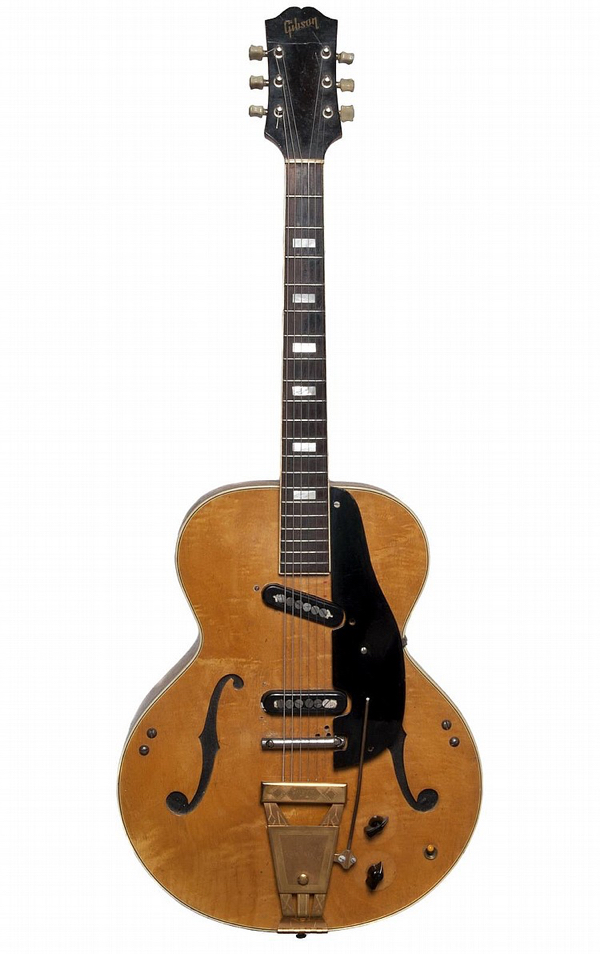
Close-up #24: 1942 Zephyr Spanish
SN 7133
Here a blonde Epiphone electric guitar that's pretty unique and you
won't see every day – unless you are its lucky owner, of course ... The serial number is stamped on the back of the headstock, as typical for Epiphone electrics from the 1939–49 period: SN 7133 suggests the guitar was built c. 1942 – likely one of the last electric guitars before Epiphone had to halt electric instrument production due to WW2-related material restrictions. Note Epiphone's enclosed tuning machines, first introduced in the 1939 catalog.
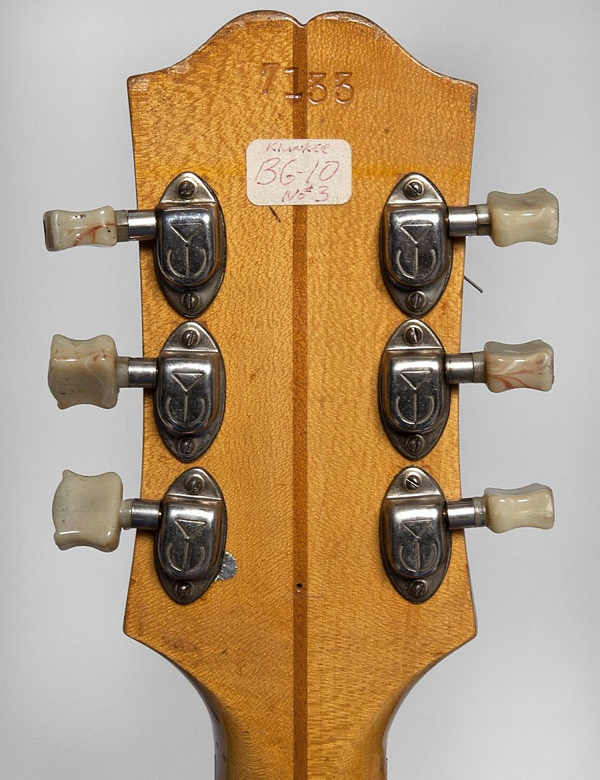
Did we say Epiphone? Hey, there is a post-war "Gibson" logo decal on the headstock! The reason for this will become clear further down this page ... However if you look closely you will spot 3 screw holes: These were once holding an Epiphone "bikini" logo plate.
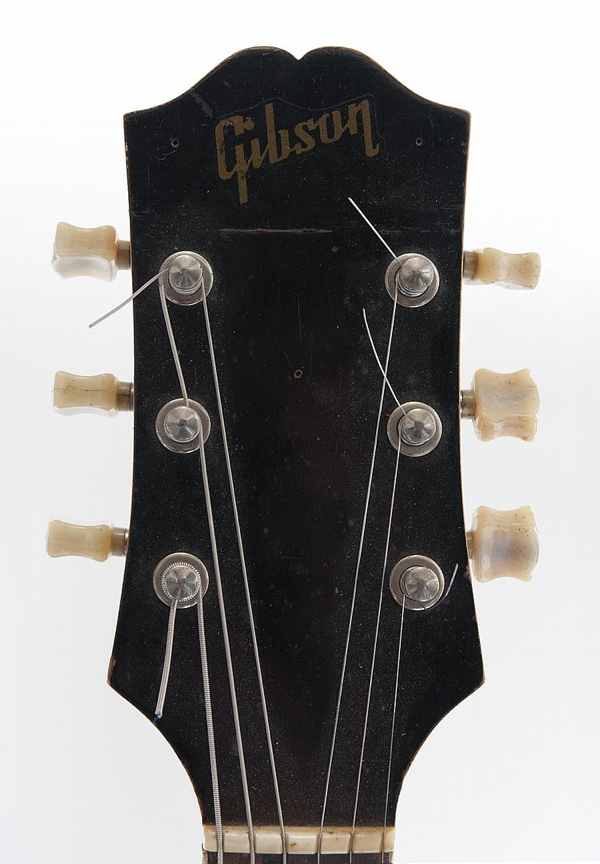
Because most pre-1950 Epi electrics don't show their model name anywhere on the instrument, model identification has to be based on the features. The blonde, laminated maple body and block fret markers are typical for the "Zephyr Spanish" model – as pictured in the 1942 catalog below.
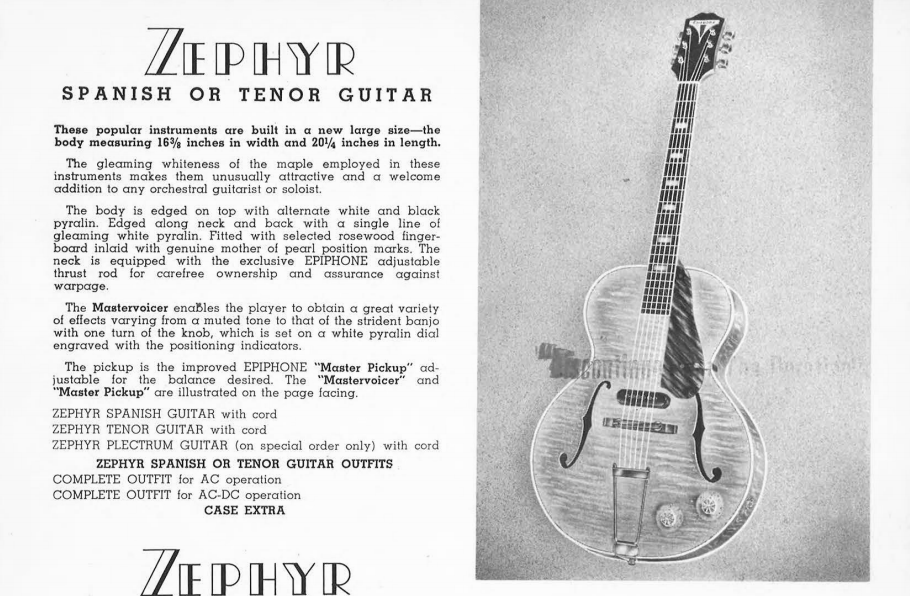
However this example has some unusual features: A second, slanted pickup in neck position, and a vibrato tailpiece ...
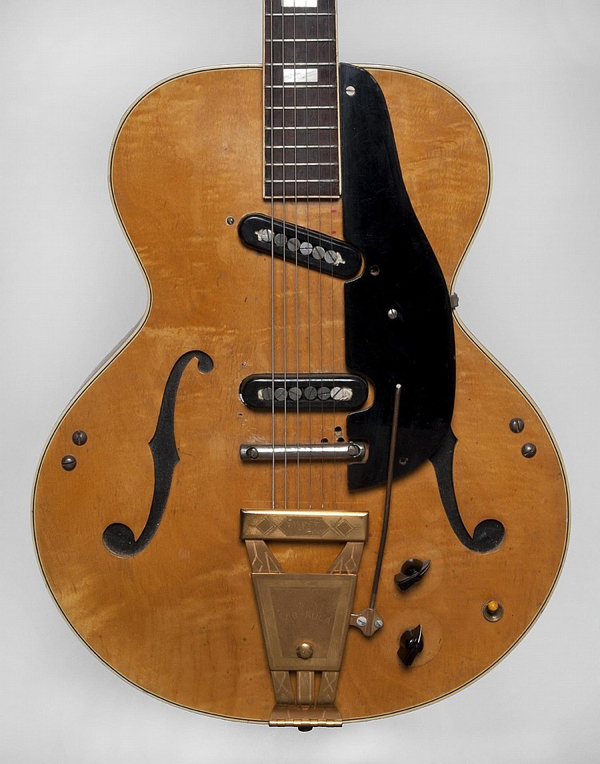
... which is quite spectacular: The fancy, gold-plated unit is engraved "Super 400" on the string retainer bar and "Vib-rola" on the cover plate. We know that in the 1930s it was not uncommon to see Kauffman Vibrola units installed on acoustic archtops (see Close-up #1), but we have never seen another one like this – obviously custom-made based on a pre-war Gibson Super 400 tailpiece!
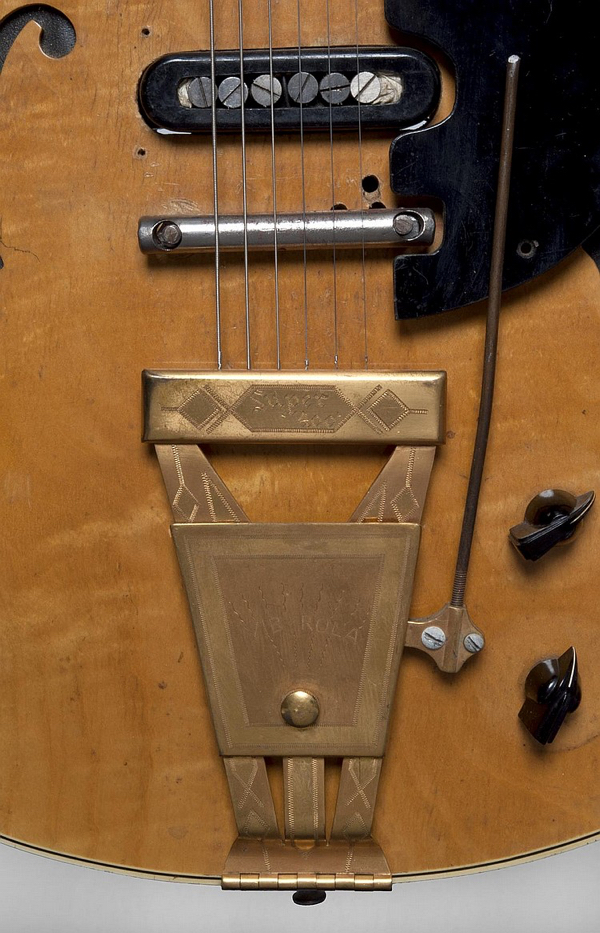
The back of the guitar with the access door typical for pre-war Epiphone electrics instruments – ...
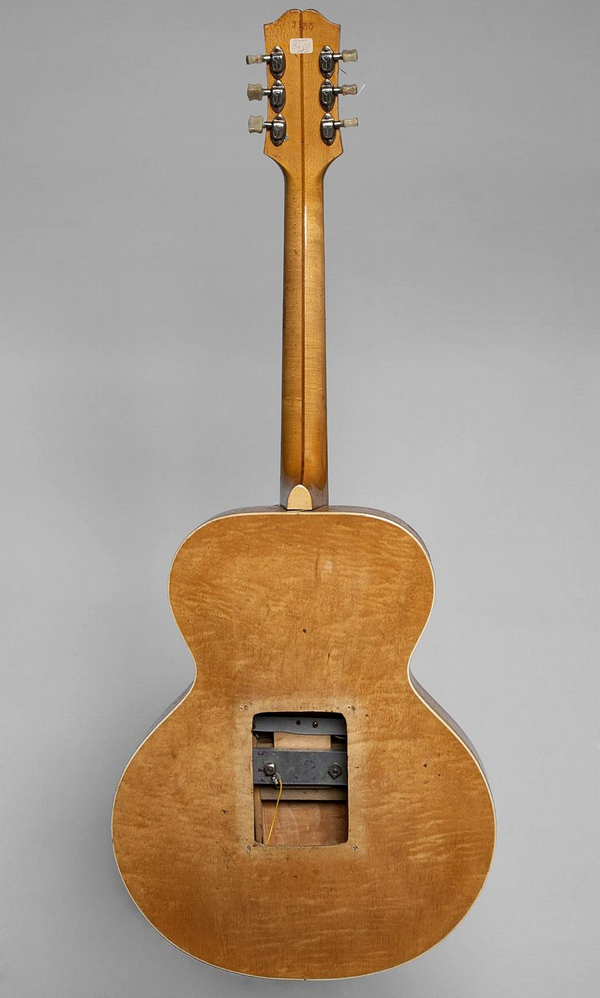
... a feature very much appreciated by the long-time owner of this guitar who remembered later: "One day I got a call from a guy who said, ‘I work for a bread wrapping company and I got my hand caught in a wrapping machine. I have a guitar and amp I want to give you. It’s an Epiphone.’ I said, ‘I play a Gibson, I don’t play Epiphone.’ But he said, ‘I’ll give it to you.’ So I said, ‘Well, bring it over.’ So I looked at it and gave him $125. I took it because it had a door in the back, so I could go in and change the pickups, do the electronics, all that junk."
The rest is history.
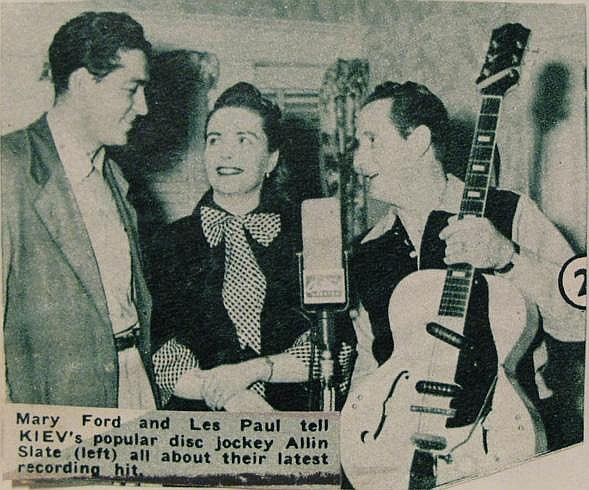
Lester William Polfuss (1915–2009), known as Les Paul, had built "The Log" – his legendary solid body guitar prototype – at the Epiphone workshop in New York in 1941. And Les used several highly modified Epiphone electric archtop guitars – which he lovingly named "Klunkers". In the newspaper clipping pictured above Les is holding the guitar featured here – "Klunker #3" (equipped with a Rickenbacker Vibrola at the time).
Pictured below Les' note describing some of the modifications of "Klunker #3".
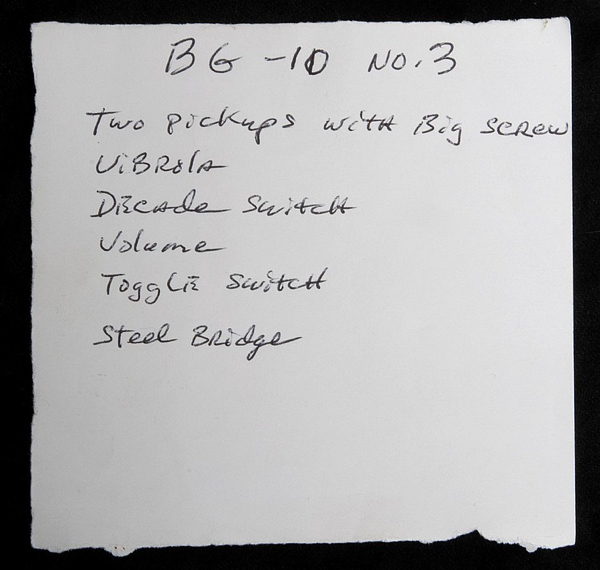
After WW2 it was not Epiphone but Gibson who supported Les Paul to develop the legendary solid body electric guitar model named after its inventor. Les kept using his old Epi Klunkers – but with the logo of his new endorsers stuck on the headstocks ...
Les Paul and his wife Mary Ford (1924–1977) became superstars in the 1950s. In the photo below Mary with Klunker #3, Les with Klunker #1. Ironically, these pioneers of the modern electric guitar faded from the charts with the advent of rock and roll ...
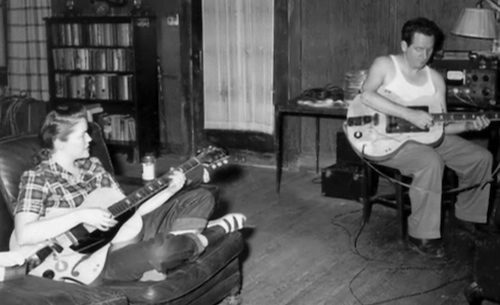
Zephyr Spanish SN 7133 was among property from the estate of Les Paul auctioned in 2012.
The winning bid was $150,000!
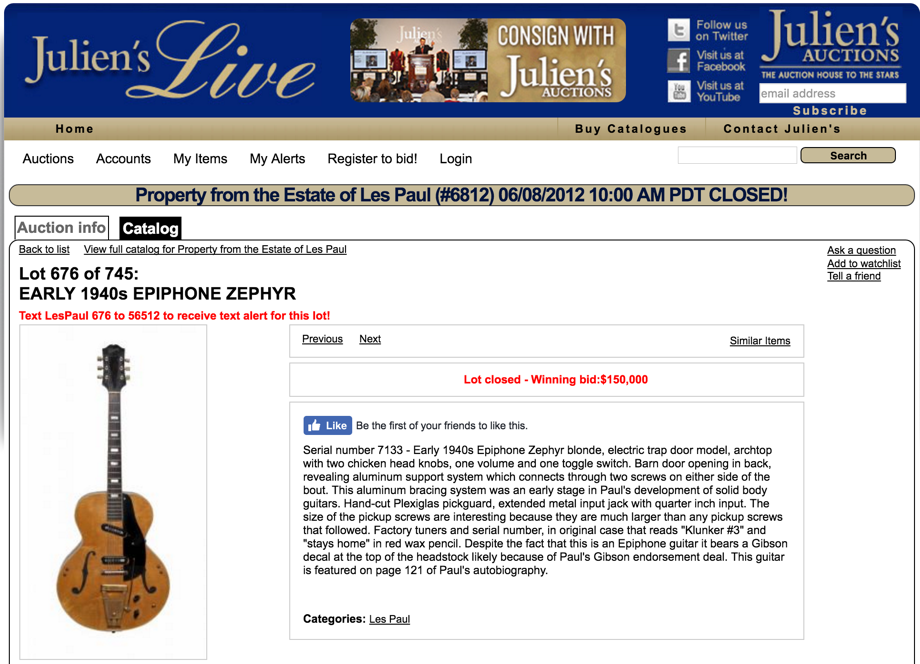
(Nov 20, 2016)